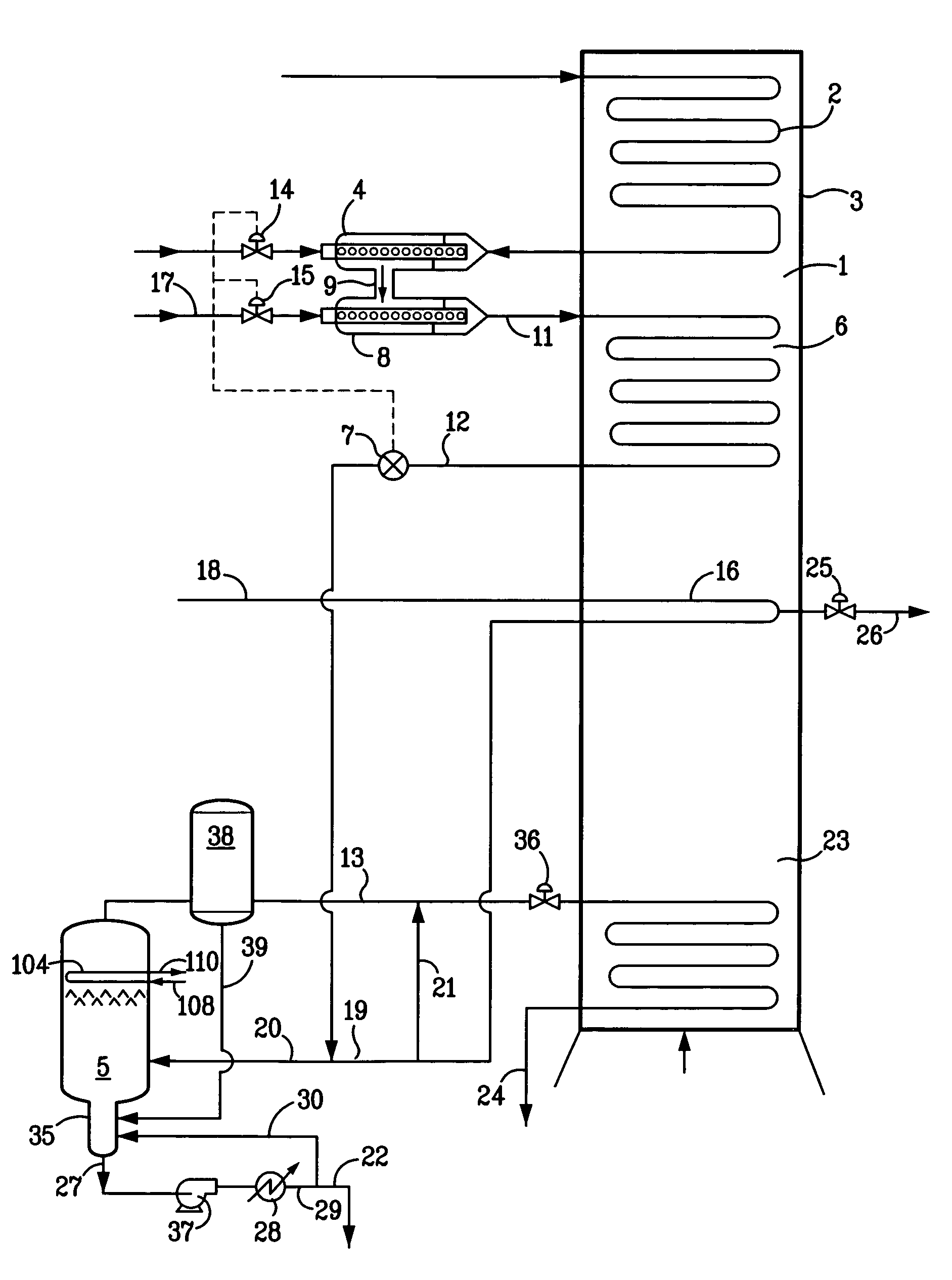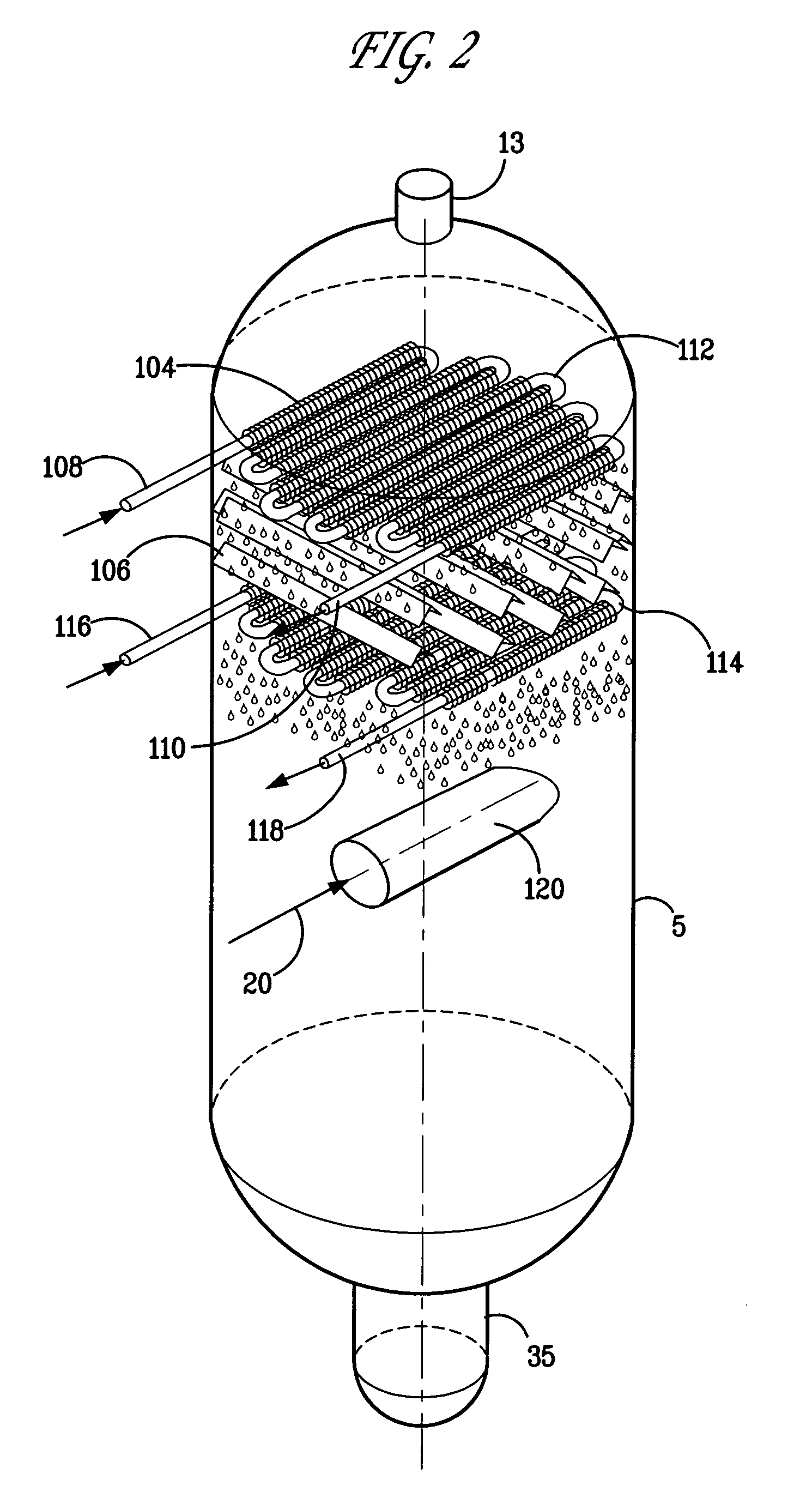Cracking hydrocarbon feedstock containing resid utilizing partial condensation of vapor phase from vapor/liquid separation to mitigate fouling in a flash/separation vessel
a hydrocarbon feedstock and hydrocarbon feedstock technology, applied in the direction of liquid degasification, separation process, thermal non-catalytic cracking, etc., can solve the problems of rapid coking in the radiant section of the furnace, contamination of naphthas, and fouling in the transfer line exchanger, so as to reduce the content of coke precursors
- Summary
- Abstract
- Description
- Claims
- Application Information
AI Technical Summary
Benefits of technology
Problems solved by technology
Method used
Image
Examples
Embodiment Construction
[0025]The present invention relates to a process for cracking hydrocarbon feedstock containing resid comprising heating the feedstock, mixing the heated feedstock with a fluid and / or a primary dilution steam stream to form a mixture stream, and flashing the mixture stream within a flash / separation vessel to form a vapor phase and a liquid phase. The vapor phase is partially condensed by contacting with a condenser and, optionally, surfaces (sheds) underneath the condenser to improve contact between the condensate and the rising vapor, within the vessel, to condense at least some coke precursors within the vapor while providing condensates which add to the liquid phase. The vapor phase of reduced coke precursors content is removed as overhead and the liquid phase is removed as bottoms. The vapor phase is heated and then cracked in a radiant section of a pyrolysis furnace to produce an effluent comprising olefins. The resulting effluent is quenched and cracked product is recovered fro...
PUM
| Property | Measurement | Unit |
|---|---|---|
| Temperature | aaaaa | aaaaa |
| Temperature | aaaaa | aaaaa |
| Temperature | aaaaa | aaaaa |
Abstract
Description
Claims
Application Information
 Login to View More
Login to View More - R&D
- Intellectual Property
- Life Sciences
- Materials
- Tech Scout
- Unparalleled Data Quality
- Higher Quality Content
- 60% Fewer Hallucinations
Browse by: Latest US Patents, China's latest patents, Technical Efficacy Thesaurus, Application Domain, Technology Topic, Popular Technical Reports.
© 2025 PatSnap. All rights reserved.Legal|Privacy policy|Modern Slavery Act Transparency Statement|Sitemap|About US| Contact US: help@patsnap.com



